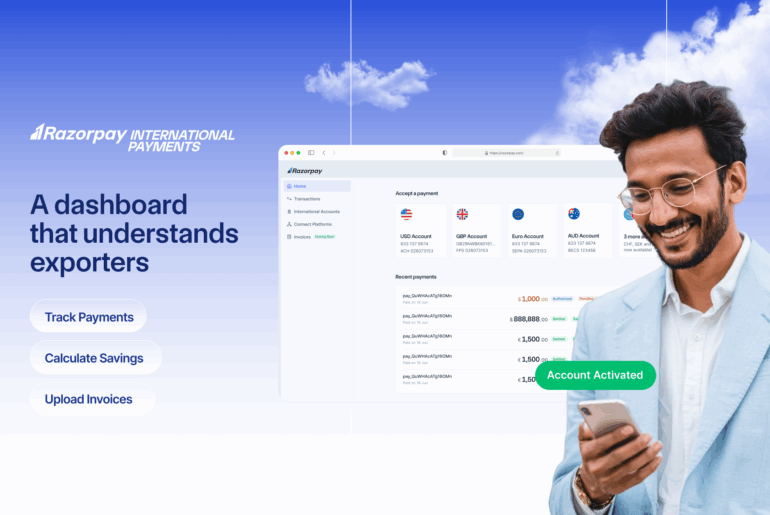Ever scrolled through your bank statement and spotted a credit with a cryptic label like ‘P1502’? Your first thought might be that it’s a payment you’ve received. But in reality, that code tells a different story: it’s not a new payment, but a refund or a reversal of a previous transaction.
This little code is a crucial piece of the puzzle for anyone dealing with international payments. It’s an inward remittance code set by the Reserve Bank of India (RBI) specifically for funds that are returned for reasons other than import refunds.
Understanding P1502 is vital for accurate financial reconciliation and staying compliant with regulations like the Foreign Exchange Management Act (FEMA). In this guide, we’ll walk you through what this code means, when to expect it, and how to manage it without any confusion.
Key TakeawaysP1502 = Non-Import Refund: This code is used for inward remittances that are refunds or reversals of payments not related to the import of goods. It’s a Credit, Not Income: P1502 always signifies money coming back into your account as a reversal, not as new revenue. Essential for Reconciliation: It clarifies why you received a credit, making your bank reconciliation process faster and more accurate. Supports FEMA Compliance: Correctly coded transactions provide a clear audit trail for regulatory authorities. |
What is the P1502 Purpose Code?
At its core, the P1502 purpose code is used by banks to classify an inward remittance as a “Reversal of wrong entries or refunds for non-import transactions.”
Think of it as the financial equivalent of a ‘Return to Sender’ stamp, but with a specific reason attached. When you send money abroad for a purpose not related to importing goods or services and that money comes back to you, the RBI requires the bank to label it with P1502. This provides a clear, standardized reason for the credit, creating an unambiguous audit trail for both you and the regulatory authorities.
When Should You Expect to See the P1502 Code?
You won’t use this code yourself when making a payment, but you’ll see it on your statement when a foreign entity returns your money. Here are a few common scenarios where P1502 comes into play:
-
A Duplicate Payment Refund:
Imagine you accidentally paid an international vendor twice for a software subscription. When they refund the extra payment, it will likely be coded as P1502.
-
An Erroneous Transfer:
You intended to pay a domestic supplier but mistakenly sent the funds to an overseas account. The reversal of this incorrect transaction would be marked with P1502.
-
Cancellation of an Advance Payment:
Let’s say you paid an advance for an overseas marketing service (not related to importing goods) and later cancelled the project. The refund you receive would fall under this code.
-
Bank-Side Corrections:
Sometimes, banks make errors while processing international transactions. When they identify and correct these mistakes by crediting the funds back to your account, they use P1502 to categorise the reversal.
Did You Know?
P1502 isn’t about getting paid—it’s about getting your money back. It’s the code for corrections, cancellations, and do-overs in non-import international transactions.
Why Understanding P1502 Matters
Ignoring purpose codes might seem harmless, but understanding them can save you significant headaches. Here’s why P1502 is particularly important:
- Accurate Bank Reconciliation: It turns a question mark on your statement into a clear, closed-loop transaction. You immediately know it’s a reversal, not new revenue, which simplifies your accounting.
- Clear Cash Flow: By identifying reversals correctly, you get a more accurate picture of your actual business cash flow, preventing you from mistaking a refund for income.
- Simplified FEMA Compliance: During an audit or review, regulatory bodies look for clear documentation. A P1502 code explicitly states the nature of the transaction, preventing potential misunderstandings or red flags about unexplained foreign credits.
How to Identify a P1502 Transaction on Your Statement
Spotting a P1502 transaction is straightforward if you know what to look for. Here’s a quick breakdown:
| Indicator on Statement | What it Represents |
| Credit Entry with ‘P1502’ | The transaction is a refund or a reversal related to a prior non-import payment you made. |
| Credited Amount | This amount will usually match a previous debit from your account for the same erroneous or cancelled transaction. |
| Bank Advice / Narration | The transaction description or associated bank advice might include a reference number (UTR) or a short note mentioning the reason for the reversal. |
What Happens if a Transaction is Miscategorized?
While you don’t assign the P1502 code, it’s good to know the implications if a bank misuses it or if the nature of the transaction is unclear.
- Transaction Delays or Rejections: If the purpose of a refund is ambiguous, banks may flag the transaction and request additional documentation, causing delays.
- Accounting Headaches: A misclassified refund could be mistaken for revenue, leading to incorrect financial statements and tax calculations.
- Compliance Red Flags: A pattern of poorly documented or misclassified international transactions can attract scrutiny from auditors and regulatory bodies.
Simplify Export Compliance with Razorpay International
Keeping track of codes like P1502 and ensuring every remittance is documented correctly can feel like extra work, especially when you’re focused on growing your business. But what if compliance could be effortless?
That’s where a robust payment platform comes in. With Razorpay International, you can stop worrying about the complexities and focus on what you do best.
- Accept Payments, Not Problems: Receive payments from clients in over 100 currencies without having to decode every single banking regulation.
- Automated Compliance: Razorpay ensures that all transactions are correctly logged with the right purpose codes, making your financial records clean and compliant from the start.
- Effortless Documentation: Automatically generate compliant remittance reports and other essential export documents like the e-FIRA, saving you time and reducing the risk of manual errors.
Simplify International Payments with Razorpay
Ready to streamline your global payments and refunds?
Conclusion
The P1502 purpose code might seem like a small detail, but it plays a big role in the world of international finance. It’s a clear signal that a non-import related payment you made has been refunded or reversed. For exporters and service providers, understanding its meaning is the first step toward cleaner books and stress-free compliance.
The next step is to let technology handle the heavy lifting. By using a compliant platform like Razorpay, you can ensure that every transaction—whether it’s a payment or a refund—is categorized correctly, keeping your reconciliation smooth and your business audit-ready.
Frequently Asked Questions (FAQs)
-
What does purpose code P1502 mean?
P1502 is an RBI purpose code that stands for “Reversal of wrong entries, refunds etc. for non-import related transactions.” It signifies that you have received money back for a payment that was made in error, duplicated, or cancelled.
-
Is P1502 used for import refunds?
No. P1502 is strictly for non-import related refunds. Refunds related to the return of imported goods are typically covered by the purpose code P1501.
-
Can business owners use this code for export-related refunds?
No, business owners do not assign this code themselves. This code is used by the banking system to classify a refund you are receiving for a non-import payment you previously made. Refunds you might issue to your international customers for your exports would be handled differently as an outward remittance.
-
What documentation supports a P1502 transaction?
It’s wise to keep documentation of the original erroneous or cancelled payment, such as the invoice, payment confirmation, and any communication with the other party regarding the refund. This will help you should any clarification be needed later.
-
Does this code impact GST or e-FIRA reporting?
The code itself does not directly impact GST, but the underlying transaction does. Since a P1502 transaction is a reversal of a payment, it’s not considered revenue and shouldn’t attract GST. For your e-FIRA, this transaction will be correctly classified, ensuring your remittance advice accurately reflects a refund rather than a payment for services.


